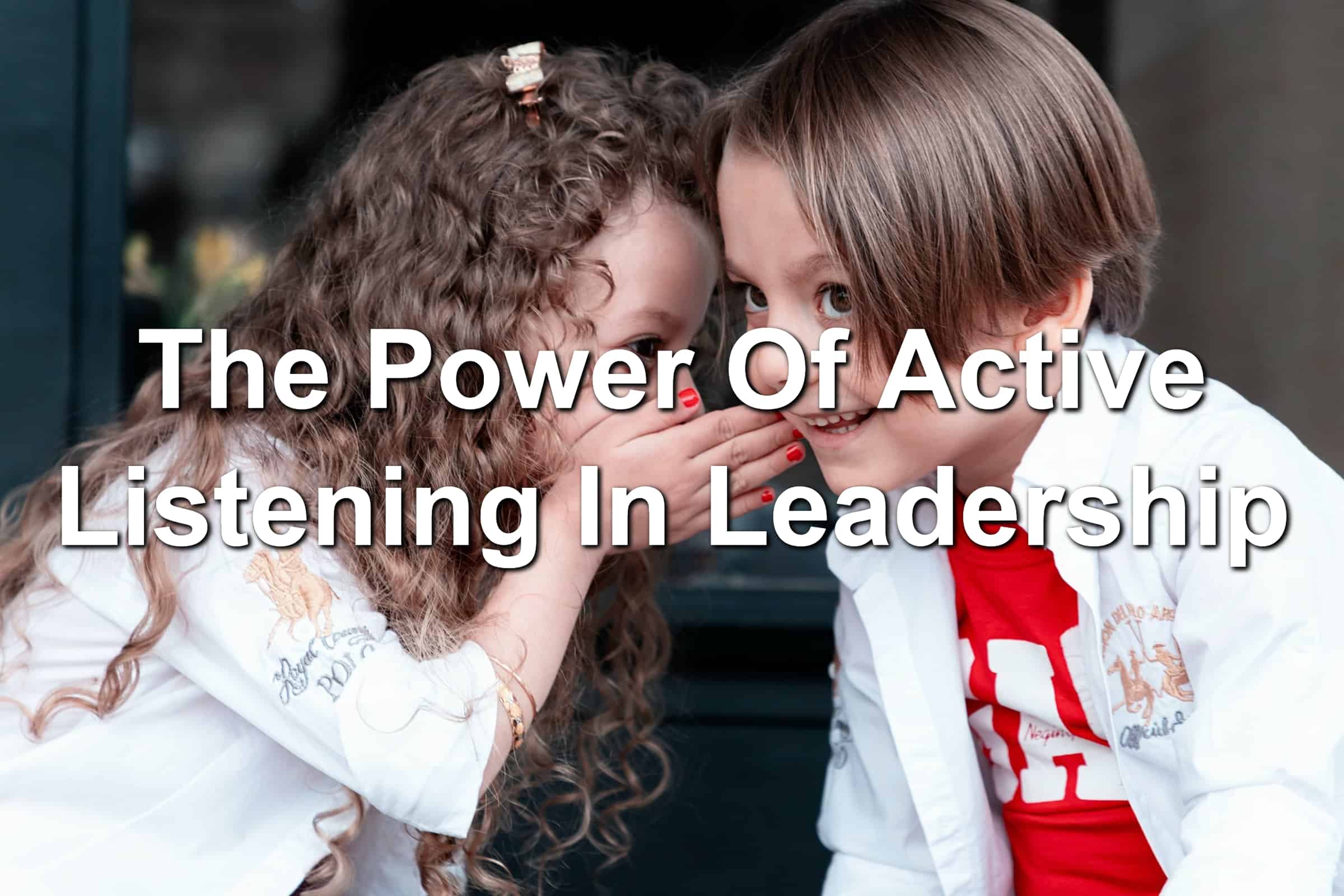There’s an age-old saying that people don’t care what you know until they know how much you care. This quote has been attributed to Theodore Roosevelt. Regardless of whether or not Roosevelt actually said this or not, it’s an important aspect of leadership.
Your people want to know you care. One of the ways you can show this is through listening… active listening.

Photo by saeed karimi on Unsplash
Carl Rogers and Richard Farson introduced the idea of active listening in 1957. According to Duke University, active listening is listening with the intent to really understand how the person is feeling and be able to put yourself in their shoes to empathize with them.
That’s a lot to take in.
To be a great active listener, you have to:
- Listen
- Have intent
- Be willing to understand the other person
- Put yourself in their shoes
- Empathize with them
This sounds great, right? It is. It will help you become a better leader if only you’re willing to become an active listener.
The Power Of Active Listening In Leadership
There’s power in being an active listener. Through active listening, a leader can gain the trust of the employees and understand them better.
Active listening gets you to place yourself in the shoes of others. You begin to think like them. You begin to feel what they’re feeling.
Through this, you can develop methods of communication that break through common barriers facing leaders. These barriers include the idea that employees believe their leaders cannot relate to them, an emotional distance between the leader and those they lead, and more.
By breaking down these barriers, you will connect more emotionally with those in your employ. Those in your employ will know you care. They will trust you and move forward with you as the company succeeds.
Tips To Become A Better Active Listener
Want to become a better active listener? We all should strive to make this a pivotal skill to improve upon. You’ll have to work through challenges and difficulties as you change how you listen. However, the rewards of becoming an active listening leader will be leaps and bounds more than the effort you put into learning this crucial leadership skill.
Try the following tips to become a better active listener.
Ask questions:
Thinking and responding to a conversation can be tricky so this is a more advanced tip. You have to learn how to be able to process the conversation, stay actively aware, and ask questions that further the conversation.
By asking great questions, you show the other party that you’re listening, trying to understand, and growing the conversation.
Imagine if you were an employee and your leader asked pertinent questions to the conversation. These questions then led to valuable insight for you and the leader.
It can be a game-changer.
Get rid of distractions:
Distractions are the killers of a great conversation and active listening. I’ll be the first to admit that I struggle with this. I’m constantly distracted by movements in the distance, the din of other conversations, and more. My eyes and brain wander when there are distractions.
What can be done about this? You remove distractions.
Get to a place where no other conversations are happening. Close the shades on the windows. Silence your noise-making devices (yes, your cell phone!).
By eliminating distractions, you can focus on the conversation at hand and be an active listener.
Reflect feelings:
Active listening means you’re putting yourself into the shoes of others. You can do this by reflecting feelings. This means you try to name or sense the feelings the speaker may be feeling.
You will understand their position better as you understand how they’re feeling. If the person speaking to you is feeling upset, sad, depressed, or happy, each one elicits a different reaction from you.
Learn to reflect feelings by understanding how others are feeling.
Behave appropriately:
I’m a fidgeter. I love to move, twirl my wedding ring, and more. It calms me down. Yet, I know these things can be distractions when others are trying to communicate with me.
Another thing to be aware of is your posture. Are you slouching? Are your eyelids drooping? These are things that affect communication and tell the other person you’re paying attention or not.
Make sure you’re behaving properly in the conversation. Learn to control your motions and posture. The more you do, the more others will see you’re listening.
